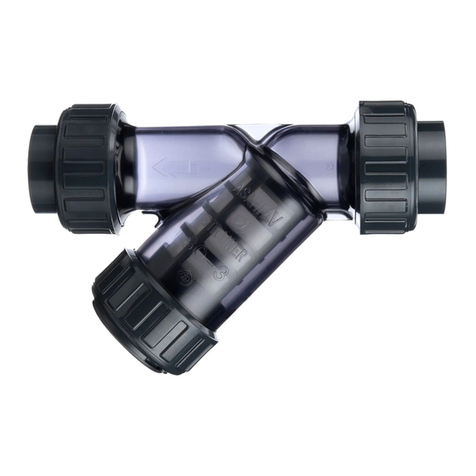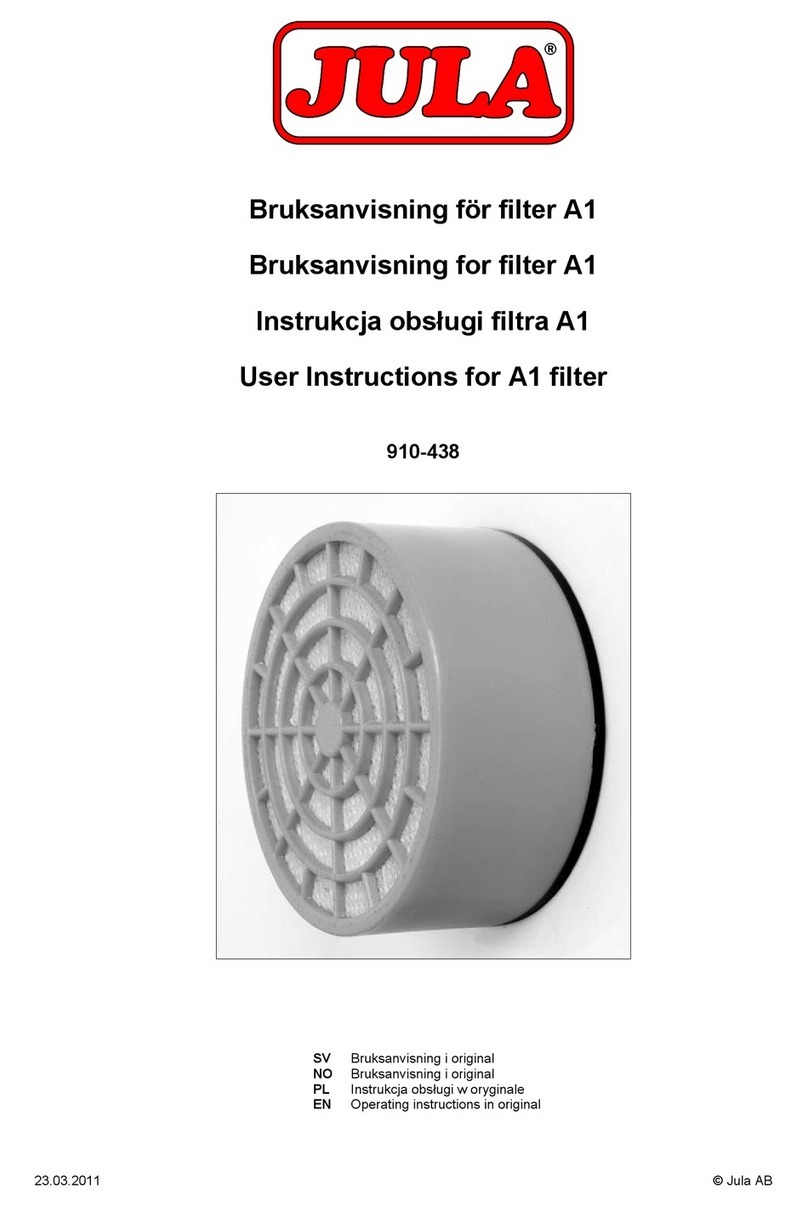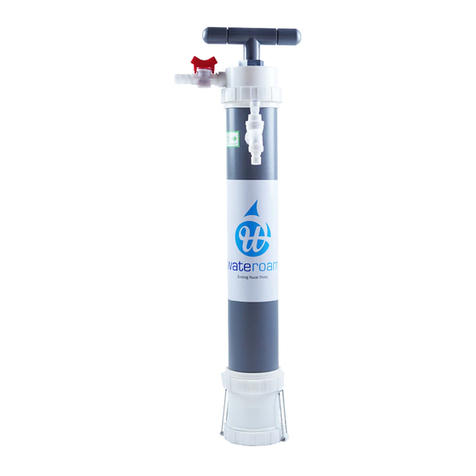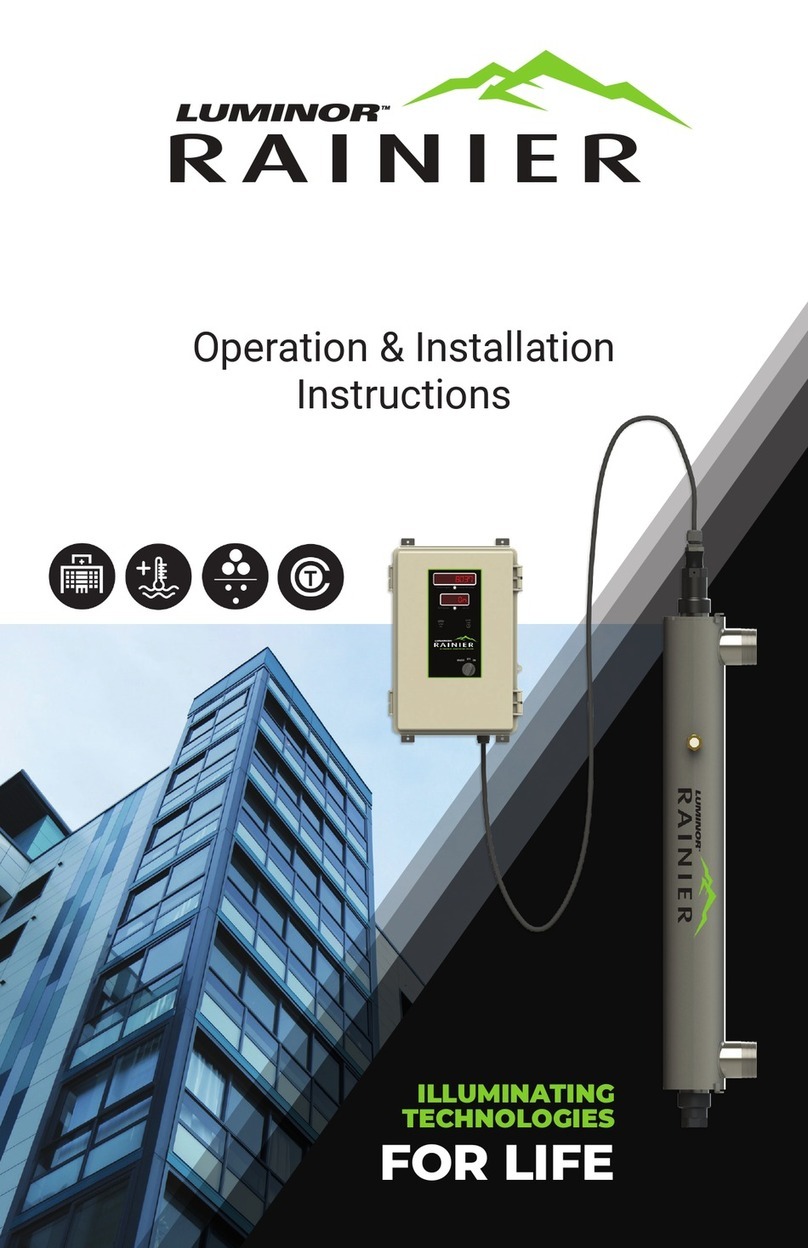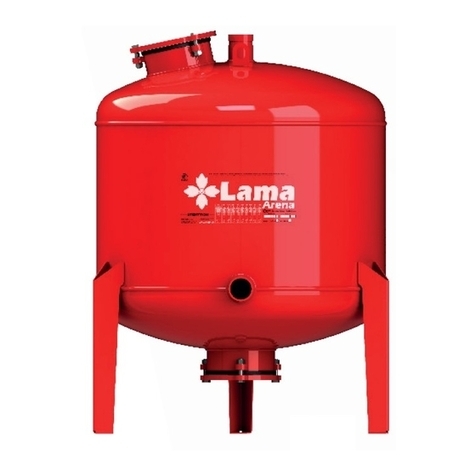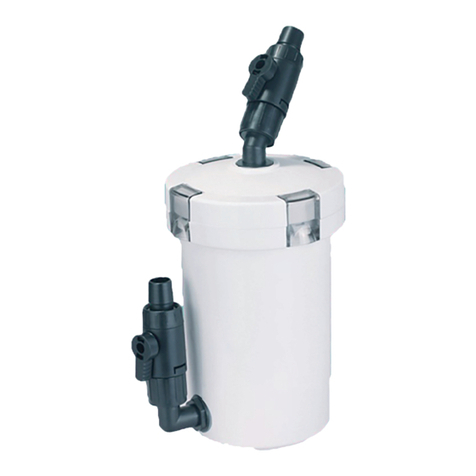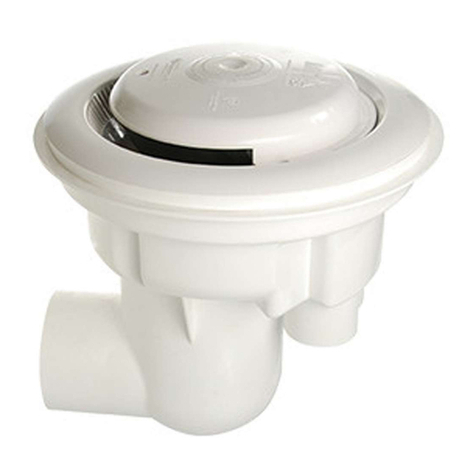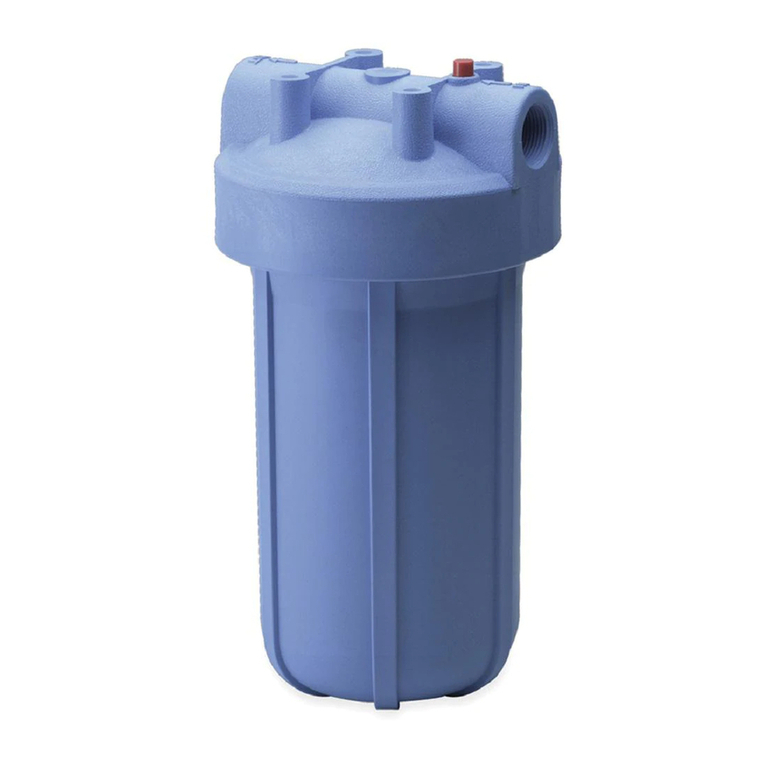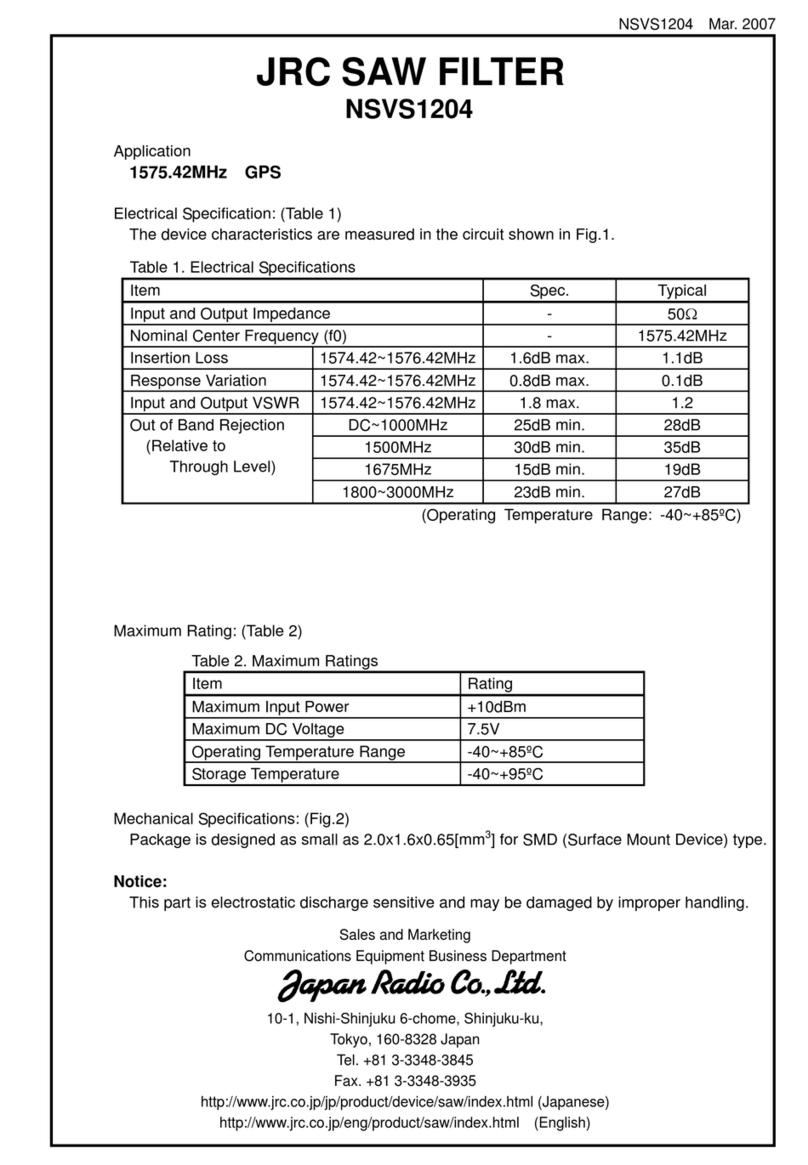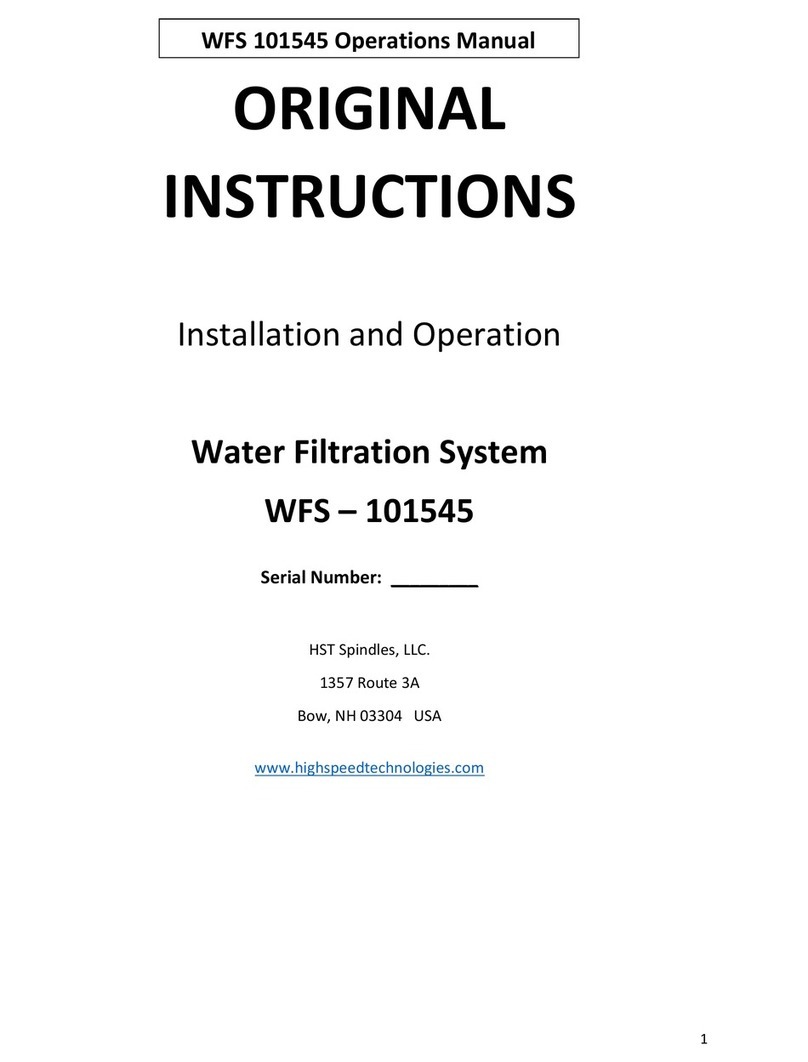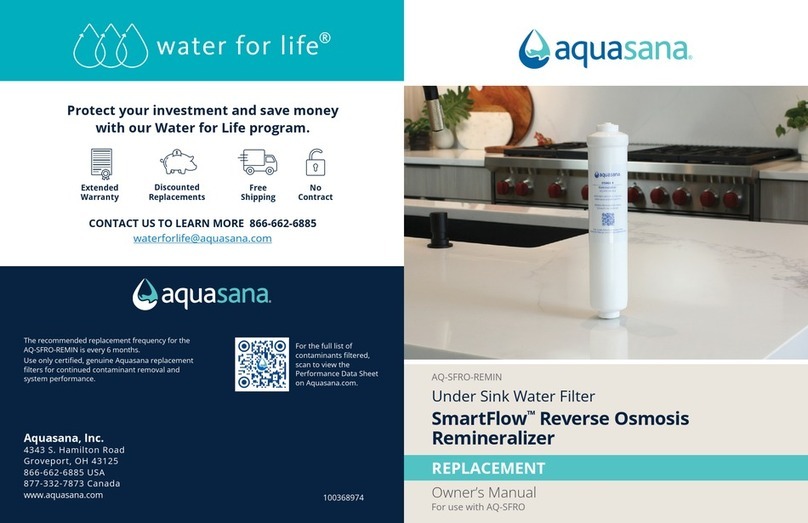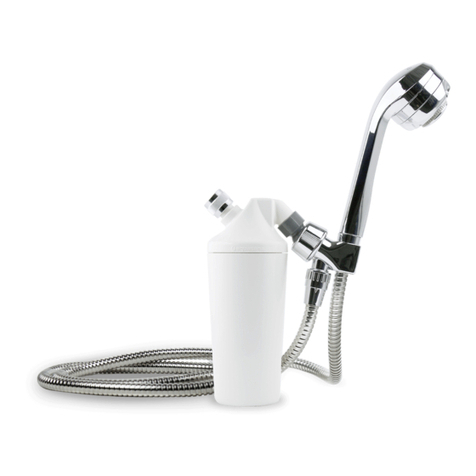FDC aerofilter 1500 Series User manual

ICA
1500-SERIES-ICA-1
Revision A - 01/22/2009 Page 1of 15
INSTRUCTIONS FOR CONTINUED AIRWORTHINESS
1500EFS
ENGINE INLET BARRIER FILTER SYSTEM
MDHI/HUGHES OH-6 A-C “CAYUSE”
This document provides information necessary for the maintenance of the 1500EFS Engine Inlet
Barrier Filter System installed on the MDHI/Hughes OH-6 helicopter.
© 2009, Filtration Development Company, LP

ICA
1500-SERIES-ICA-1
Revision A - 01/22/2009 Page 2of 15
Instructions for
Continued Airworthiness
RECORD OF REVISIONS
DOCUMENTATION SUPPORT
It is the responsibility of the user of this document to verify that this is the latest revision released by
FDC/aerofilter Engineering. It is Filtration Development Company’s intention to provide our customers with the
best possible support and assistance with our products. Please contact us using the information below to get
the latest version of this and other documents.
FDC/aerofilter
8 Digital Drive, Suite 104
Novato, CA 94949 USA
Tel: 415-884-0555
Fax: 415-884-0505
Toll-Free (US & Canada): 800-350-6674
www.fdcaerofilter.com
REV DATE DESCRIPTION BY
CHECKED
A
PPROVE
D
IR 08/15/1999 Initial Release AG AG AG
A 01/22/2009
Reformatted; updated Sections 1.5, 3.2, 4.3,
4.4, 4.6, 5.1, 5.2, & 6.1; updated Tables 3.1
& 7.1; added Figures 4.1, 5.1, & 5.2.
RhlB JJB REG

ICA
1500-SERIES-ICA-1
Revision A - 01/22/2009 Page 3of 15
Instructions for
Continued Airworthiness
TABLE OF CONTENTS
1.0 Introduction..............................................................................................................................4
1.1 General Product Information ............................................................................................. 4
1.2 Scope of ICA ..................................................................................................................... 4
1.3 Precautions ....................................................................................................................... 4
1.4 Definitions, Abbreviations, Acronyms and Symbols..........................................................5
1.5 Distribution ........................................................................................................................ 5
2.0 Airworthiness Limitations.......................................................................................................6
3.0 Inspection/Test Requirements................................................................................................7
3.1 General Information .......................................................................................................... 7
3.2 Service Intervals................................................................................................................ 7
Table 3.1 - Recommended Service Intervals .......................................................... 7
4.0 Filter Element Servicing..........................................................................................................8
4.1 General Information .......................................................................................................... 8
4.2 Removal and Reinstallation ..............................................................................................8
Figure 4.1 – Filter Element........................................................................................ 8
4.3 Filter Element Cleaning..................................................................................................... 9
4.4 Inspection of Element (Severe Conditions)..................................................................... 10
4.5 Inspection of Element (Normal Conditions)..................................................................... 10
4.6 Oiling the Filter Element.................................................................................................. 11
5.0 Component Replacement......................................................................................................12
5.1 Removal and Replacement of Actuator .......................................................................... 12
Figure 5.1 – Actuator Assembly Detail.................................................................. 12
5.2 Removal and Replacement of DPS ................................................................................ 13
Figure 5.2 – DPS Assembly.................................................................................... 13
6.0 Functional Test ......................................................................................................................14
6.1 DPS Functional Test .......................................................................................................14
7.0 Troubleshooting.....................................................................................................................15
Table 7.1 – Troubleshooting................................................................................... 15

ICA
1500-SERIES-ICA-1
Revision A - 01/22/2009 Page 4of 15
Instructions for
Continued Airworthiness
1.0 Introduction
1.1 General Product Information
The engine filter system is designed to protect the turbine engine from foreign object
damage and micro erosion when operating in normal and severe environmental
conditions. The Model 1500EFS Engine Inlet Barrier Filter System consists of a duct
assembly, alternate air door assembly, filter element, and low inlet pressure
annunciator system.
The filter element is comprised of a specially formulated polymerized oil suspended by
a pleated wire cloth and cotton fabric matrix for the purpose of attracting and holding
airborne dust particles. These filter elements are serviced by cleaning and re-oiling at
regular intervals or as required based on engine performance loss or by visual
determination that engine performance could be adversely affected prior to the next
scheduled servicing.
The pilot actuated alternate air system is provided to bypass the filter elements in the
event that engine performance is degraded due to filter blockage. The alternate air
system should be inspected at regular intervals or prior to flight into environmental
conditions that may require its use.
1.2 Scope of ICA
This manual describes the airworthiness limitations, service instructions, inspection
procedures, and testing of the engine filter system and its individual components.
Strict adherence to the information given herein will assure maximum filtration benefit
and increased component life.
1.3 Precautions
The following precautions may be used throughout this manual and are defined as
follows:
WARNING: Maintenance procedure, practice, condition, etc. which if ignored could
result in personal injury or loss of life.
CAUTION: Maintenance procedure, practice, condition, etc. which if ignored could
result in damage or destruction of equipment.
NOTE: Maintenance procedure, practice, condition, etc. or a statement which needs
to be highlighted.

ICA
1500-SERIES-ICA-1
Revision A - 01/22/2009 Page 5of 15
Instructions for
Continued Airworthiness
1.4 Definitions, Abbreviations, Acronyms and Symbols
The following are used throughout the manual:
fl. oz. Fluid Ounce
in. lb. Inch Pound (torque)
ΔP Differential Pressure
EFS Engine Filter System
STC Supplemental Type Certificate
FAR Federal Aviation Regulation
ICA Instructions for Continued Airworthiness
1.5 Distribution
From time to time it may be necessary to revise or update information contained in this
ICA. Although best efforts will be made to distribute revisions and updates to the
registered owner of the product, it is ultimately the responsibility of the current user to
ensure he is using the most current information available. Additional copies of this ICA
as well as revisions and updates may be obtained by contacting FDC/aerofilter. Refer
to “DOCUMENTATION SUPPORT” on page 2 for full contact information, including the
website address. Additionally, you may register to receive these updates when they
are released.
When the latest update is received, the previous revision should be discarded. Ensure
that all pages of the document are marked as the latest revision.

ICA
1500-SERIES-ICA-1
Revision A - 01/22/2009 Page 6of 15
Instructions for
Continued Airworthiness
2.0 Airworthiness Limitations
The Airworthiness Limitations section specifies inspections and other
maintenance required under §43.16 and §91.403 of the Federal Aviation
Regulations unless an alternate program has been approved.
There are no airworthiness limitations associated with this system.

ICA
1500-SERIES-ICA-1
Revision A - 01/22/2009 Page 7of 15
Instructions for
Continued Airworthiness
3.0 Inspection/Test Requirements
3.1 General Information
This section covers the basic maintenance and service requirements necessary for
safe operation and continued airworthiness of the Model 1500EFS Engine Inlet Barrier
Filter System.
3.2 Service Intervals
When severe or unusual environmental conditions exist or as flight
requirements dictate, it is the responsibility of the operator to increase the
frequency and scope of inspections necessary to ensure safe operation. Due to
the operational nature of a barrier-type inlet filter, an important criterion for safe
operation is an unobstructed inlet/filter. This can be accomplished by visual inspection
of the filter through the inlet fairing prior to each flight. Small suspended particles on
the outside of the filter element do not cause an appreciable airflow restriction.
However, large, obvious debris such as leaves, brush, litter, etc., should be removed
prior to flight. Good judgment and practice will ensure safe operation as well as long
filter life.
Inspections, scheduled and conditional, shall be performed by qualified personnel and
in accordance with standard aircraft practice. Compliance with all applicable Service
Bulletins and Airworthiness Directives is mandatory.
Refer to paragraphs 4.3 and 4.4 for post cleaning inspections.
Table 3.1 - Recommended Service Intervals
EACH FLIGHT
100 ± 10 HR
INTERVAL
300 ± 10 HR
INTERVAL
A
NNUAL
INTERVAL
ITEM
INSPECTION REQUIREMENT
a Visual Inspection of Installed Filter Element (remove debris
and note condition of element and associated screens). ●
b Inspect, Clean and Re-Oil Filter Element
*Refer to 4.3 & 4.4 for additional information *
c Inspect and Cycle Alternate Air Door ●●
d Inspect and Cycle Differential Pressure Switch / Warning
Annunciator components ●●
e Inspect Electrical Connections ●●
f Inspect Attachment Hardware, Mounting Brackets ●●
g Inspect Housing Structure and Dust Boot for Wear &
Cracks ●●
h Leak and Pressure Test Differential Pressure Switch. ●

ICA
1500-SERIES-ICA-1
Revision A - 01/22/2009 Page 8of 15
Instructions for
Continued Airworthiness
4.0 Filter Element Servicing
4.1 General Information
To insure proper function and maintain a high level of filtration efficiency great care
should be taken when handling the element. The element is most likely to be
damaged during servicing than in operation. Special care should be taken when
removing and reinstalling the inlet cowling, as well as when removing and replacing
the element from the duct. The pleated material’s fragile wire mesh is easily damaged
or deformed when allowed to scrape against other components. Careful attention to
the following section will assure full service from the filter element.
4.2 Removal and Reinstallation
a) Remove inlet fairing.
b) Loosen the side ¼-turn fasteners securing the filter element, lift the front edge of
the element and remove forward.
c) Inspect the housing seal for condition and security.
d) Reinstallation of the element is reverse of above.
e) Replace inlet fairing.
Figure 4.1 – Filter Element
Dirty Side
(
U
pp
er Surface
)
Clean Side
(Lower Surface)

ICA
1500-SERIES-ICA-1
Revision A - 01/22/2009 Page 9of 15
Instructions for
Continued Airworthiness
4.3 Filter Element Cleaning
a) Holding the element clean side up, gently tap the element to dislodge any large
embedded debris and dirt.
b) Use only FDC/aerofilter cleaner (P/N 40-15) to clean the filter element.
Severe Conditions:
Soak element dirty side down in a pan of FDC/aerofilter filter cleaner to a depth to
allow complete coverage of filter element. Allow cleaner to permeate for 20 to 60
minutes, depending on condition. Use caution to ensure that dirt is not transferred to
the clean side of the element. Remove element and shake thoroughly to remove dirty
cleaner. Resoak for five minutes in clean FDC/aerofilter filter cleaner.
Normal Conditions:
Spray FDC/aerofilter filter cleaner liberally onto the entire element and allow cleaner to
permeate for ten minutes. Do not use any powered device to spray the filter element.
Alternatively, soak element in a shallow pan of filter cleaner and allow cleaner to
permeate for ten minutes.
NOTE: DO NOT use any other solvents or materials to clean filter element.
DO NOT use Gasoline
DO NOT use Jet A or Kerosene
DO NOT use Caustic Cleaning Solution
DO NOT use Detergents
DO NOT use Parts Cleaning Solvents
DO NOT use Pressure or Steam Cleaners
DO NOT use High Pressure Hose Nozzles
CAUTION: Failure to service the element correctly will harm the filter media by
reducing its filtration efficiency, restricting airflow, and/or a reduction in service life.
c) Rinse the element with low pressure water from a garden hose. Always flush
from the clean side to the dirty side to avoid driving particles further into the filter
media.
d) After rinsing, gently shake off the excess water and set filter aside. Allow the
element to dry naturally. It is permissible to set the filter element in direct
sunlight to aid drying.
DO NOT use Compressed Air
DO NOT use Open Flame
DO NOT use Hair Dryers or Heat Guns
CAUTION: Excess heat will cause the filter media to shrink and high pressure air will
open small holes that allow dirt to pass.

ICA
1500-SERIES-ICA-1
Revision A - 01/22/2009 Page 10 of 15
Instructions for
Continued Airworthiness
4.4 Inspection of Element (Severe Conditions)
In these conditions it may be necessary clean and inspect the elements more
frequently than recommended in Section 3. Elements used in such conditions should
be replaced if element filter media or fine mesh screen is severely degraded. They
may be cleaned and serviced as many times as required during the element life.
Regardless of the actual time in service of the elements, the physical condition of the
element, when exposed to these harsh conditions, must remain the most important
factor used to determine the serviceability of the element.
At each cleaning carefully inspect the elements as follows:
a) Inspect the fine mesh on the forward surface of the element pleats. Complete
erosion of more than .50 in. is cause for element rejection.
b) Inspect the course mesh on the aft surface of the element. Any evidence of
mesh wire wear or general signs of mesh breakage or deterioration are cause for
element rejection.
c) After cleaning and before re-oiling, hold the element up to a light and check for
holes in the element material greater than .020 (it is normal to observe pinholes
in the filter media particularly at the pleat folds. These pinholes will not allow the
passage of dirt once the element is oiled). Close the holes if present using a fine
pick to reposition the media material to cover the hole. Numerous holes in the
media greater than 0.030 will reduce the filtration efficiency and are cause for
element rejection.
d) Check the condition of the element assembly:
•Frames for security
•Aft element latch brackets for wear and loose rivets
•Forward element Camloc receptacles for security and loose rivets.
Defects found are to be rectified. Consult FDC Engineering in the event any
repair cannot be performed using standard practices.
When operating in the most severe conditions it is highly recommended that an
additional serviceable, pre-oiled element be available. This will allow continued
service while the dirty element is being cleaned, inspected and re-oiled.
4.5 Inspection of Element (Normal Conditions)
At each 100 ±10 hours of operation or upon activation of the low inlet pressure warning
light:
•Remove the elements and inspect in accordance with paragraphs 4.4 a, b, c & d.
•Elements should be replaced after 1500 hours in service. Service life may be
extended upon consultation with and approval of FDC Engineering.

ICA
1500-SERIES-ICA-1
Revision A - 01/22/2009 Page 11 of 15
Instructions for
Continued Airworthiness
4.6 Oiling the Filter Element
CAUTION: Use only FDC/aerofilter Oil, P/N 40–10 or PN 40–10CW
FDC/aerofilter Oil is a compounded mineral-based blend, formulated with special
polymers to form the tack barrier. A blue dye has been added to show where the oil
has been applied. Eventually the blue color will fade but the oil will remain.
CAUTION: Never use the filter element without FDC/aerofilter Oil.
DO NOT use Engine Oil
DO NOT use Transmission Oil
DO NOT use Hydraulic Fluid
DO NOT use Lightweight Oils (WD-40, LPS, etc.)
a) Fill sprayer with recommended quantity of FDC/aerofilter Oil (15 Fluid Ounces).
b) Charge sprayer with compressed air.
c) Apply oil to the filter element with smooth, complete passes parallel to pleats.
d) Repeat above, applying oil with smooth, complete passes 90 degrees to pleats.
e) Use all of the measured quantity of oil.
f) Wait 30 minutes for proper wicking and lightly re-oil any light areas.
NOTE: Do not over-oil the element. Proper absorption is achieved when the filter
media is completely wicked and any surplus oil has been allowed to drip from the
element.
The filter element is now ready for installation. Refer to paragraph 4.2.

ICA
1500-SERIES-ICA-1
Revision A - 01/22/2009 Page 12 of 15
Instructions for
Continued Airworthiness
5.0 Component Replacement
5.1 Removal and Replacement of Actuator
Removal:
a) Remove forward inlet fairing.
b) Open bypass door.
c) Disconnect actuator harness.
d) Remove element and forward section of of housing assembly.
e) Remove actuator cover.
f) Remove actuator.
Replacement:
a) Place body end of actuator on to mount bracket stud and secure with washer, nut
and cotter pin. Note: nut to be finger tight then backed off to next slot for pin
installation.
b) Position lug end of actuator between spring flanges and secure with bolt,
spacer/bushing, washer, lock nut. Note: nut to be tight.
c) Connect actuator harness and safety.
d) Reinstall actuator.
e) Cycle actuator to verify function, then reinstall actuator cover.
Figure 5.1 – Actuator Assembly Detail (Actuator Cover Removed)
Actuator
Actuator
Harness
Bypass
Door
Housing
Assembly
(Forward)
Mount
Bracket
Stud
Door
Spring
Actuator
Lug Mount
Bracket

ICA
1500-SERIES-ICA-1
Revision A - 01/22/2009 Page 13 of 15
Instructions for
Continued Airworthiness
5.2 Removal and Replacement of DPS
Removal:
a) Remove forward inlet fairing.
b) Disconnect DPS harness.
c) Disconnect DPS pressure line.
d) Remove side cover of aft inlet fairing.
e) Remove 4 screws, nuts and washers attaching DPS to rear of housing assembly.
Replacement:
Reverse of above.
Figure 5.2 – DPS Assembly
Housing
Assembly
(Aft)
Filter
Element
DPS
Pressure
Line
DPS
Harness
DPS
DPS
Mounting
Hardware,
4 PL

ICA
1500-SERIES-ICA-1
Revision A - 01/22/2009 Page 14 of 15
Instructions for
Continued Airworthiness
6.0 Functional Test
6.1 DPS Functional Test
a) Connect aircraft battery and turn on master switch.
b) Remove pressure tube assembly and connect vacuum tester to DPS pressure port.
c) Apply suction to test port and check that cockpit annunciator light comes on at 9 ins.
H2O, ±1 in. H2O.
d) Replace DPS if out of limits.
e) Remove test equipment and replace pressure tube assembly on DPS port.
f) Lift guard and put ALT AIR switch in the OPEN position.
g) Check that the alternate air bypass door actuates to full open position.
h) Put ALT AIR switch to CLOSED position.
i) Check that alternate air bypass door actuates to fully closed and is secure.

ICA
1500-SERIES-ICA-1
Revision A - 01/22/2009 Page 15 of 15
Instructions for
Continued Airworthiness
7.0 Troubleshooting
Table 7.1 – Troubleshooting
SYMPTOM PROBABLE CAUSE ACTION
Annunciator light on when
engine is not running. DPS stuck in closed position. Replace DPS.
Annunciator “flickers” at all
power settings.
Filter element is partially
clogged.
Monitor engine instruments. Do
not select ALT AIR to OPEN if TOT
is within limits.
Annunciator light on at all
power settings. Filter element is dirty.
Select ALT AIR to OPEN only if TOT
for power required exceeds limits
while still in harsh environment.
Select ALT AIR to OPEN when in
clean air. Clean filter element
before next mission.
Annunciator light stays
when ALT AIR switch is set
to OPEN.
Actuator failed in retracted
position. Replace actuator.
Annunciator light on at high
power with known clean
filter element installed.
Probable turbine section
degradation.
Out of Limits DPS
Carry out engine power check.
Conduct functional test of DPS.
This manual suits for next models
1
Table of contents
